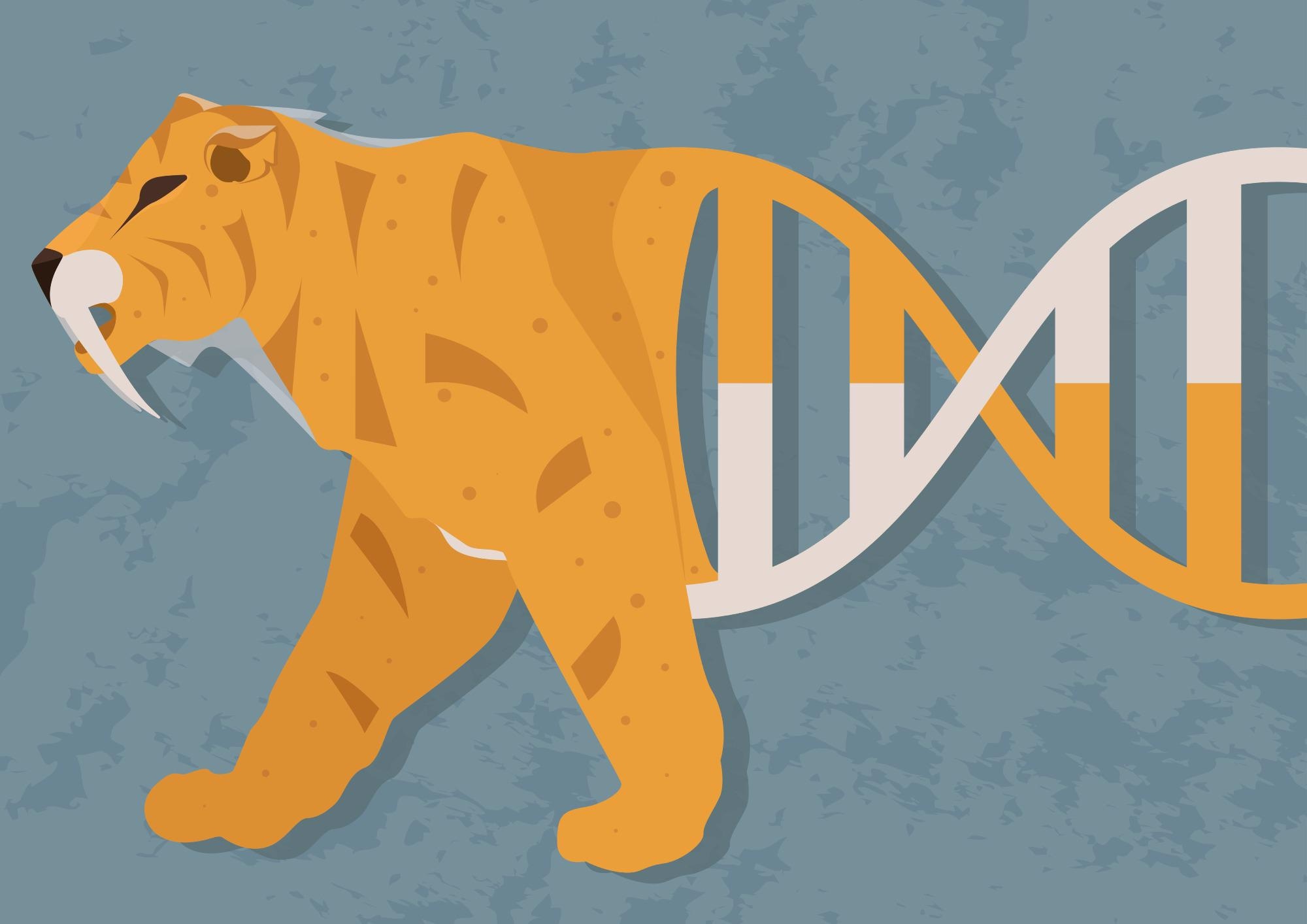The human genome is full of genetic sequences from extinct species. These “ghost” lineages that have been revealed with modern genetic sequencing techniques uncover more about evolution, not just of humans, but of many animals who also host ghost lineages in their DNA. Additionally, research into these genes passed on from long-extinct species may help scientists resolve current agricultural problems.

Image Credit: majcot/Shutterstock.com
Ancient ancestors ‘haunt’ our genomes
Recently, scientists have discovered the genes of extinct species lingering in the DNA of living creatures. Modern man, Homo sapiens, lived alongside other archaic human species, such as the Denisovans and Neanderthals, for hundreds of thousands of years. From studies of ancient DNA, studies have deduced that there was interbreeding between these human species, between early modern humans and Neanderthals, humans and Neanderthals, humans and Denisovans, Neanderthals and Denisovans, and Denisovans and extinct species of hominins known as “ghost” lineages.
Recent advances in genetic sequencing technology have allowed scientists to recognize genes in living species that can be traced back to ghost lineages. For example, while scientists have understood for many years that modern humans carry genetic sequences passed on from interbreeding with Neanderthals and Denisovans, new, more advanced genetic analyses have revealed that the human genome contains genetic sequences that hail back to ancient interbreeding with now-extinct species. Scientists refer to these other ancestors as “haunting our genomes”.
Read more about the human genome here.
Ghost lineages reveal clues about evolution
Looking into ghost lineages can help scientists piece together sequences of events, such as when and where homo sapiens interbred with other species. This information helps scientists understand the early behavior of our species, and will eventually help to uncover why we are the only hominin species left on the planet today.
Scientists are not only exploring these genes acquired from extinct species in human DNA, there are many living species who also harbor ghost sequences in their genetic code, some that represent more dramatic and profound events than those that caused the interbreeding between humans and other species.
Sequencing more genomes will help scientists uncover more genes that originate in other species, which will no doubt lead to revelations about currently unknown extinct species and help piece together the stories about those we know of.

Image Credit: ValentinaKru/Shutterstock.com
Humans, wolves, bears, elephants, and cats, all have ghost lineages
Around the time early Homo sapiens migrated to the plateau, they began interbreeding with the Denisovans. Simultaneously, the domesticated dogs the Homo sapiens brought along with them began mating with Tibetan wolves. Interestingly, the same genetic phenomenon occurred in both Homo sapiens and dogs. They both acquired adaptive variants of the EPAS1 gene, which helps the body adjust to lower levels of oxygen.
We also know that before cave bears went extinct, they interbred with brown bears. One of the most famous extinct animals, the mammoth, interbred with modern elephants. Cats are also known to frequently mate with other feline species.
Recent advances in genetic sequencing open the door to unraveling the data held within the genomes of modern animals, data that tells the story of different lineages and species in different locations and time periods throughout history.
The interactions between ancient animals that are told by the genetic sequence may reflect, scientists now believe, an adaptive strategy known as adaptive introgression, referring to adaptation via hybridization. To obtain a better chance at survival, animals expand the gene pool by interbreeding and acquiring genes that allow them to thrive in the environment.
Therefore, looking into ghost sequences may offer a way to identify useful genes. This may prove invaluable to securing the future of the human species. For example, the world faces a looming food crisis, with climate change resulting in crop yields being less reliable and bountiful and rapid urbanization and population growth both reducing available space for agriculture and increasing demand for food.
To tackle this issue, scientists have begun to search for adaptive variants of genes that may have been acquired from an unknown, extinct species. Such genes may provide adaptive advantages that are needed in the world’s changing environment and provide new sources of genetic variation for breeding.
Evidence shows that genes that jump from one species to the next tend to be those responsible for important traits for the environment the species inhabits. Already, studies have shown that breeding between Chinese and European pigs resulted in key genes responsible for fertility and immunity being passed from the Chinese pigs to the European ones. There are many stories of this happening in agriculture in different global locations. Domestic cattle in China, for example, were bred with yak to bestow them traits that would allow them to better service high altitudes.
It is likely that the continued study of ghost lineages will not only expand our knowledge of both living and extinct species but it will also help scientists overcome today’s most pressing agricultural challenges.
Sources:
- Callaway, E., 2016. Evidence mounts for interbreeding bonanza in ancient human species. Nature. https://www.nature.com/articles/nature.2016.19394
- Hedrick, P., 2013. Adaptive introgression in animals: examples and comparison to new mutation and standing variation as sources of adaptive variation. Molecular Ecology, 22(18), pp.4606-4618. https://onlinelibrary.wiley.com/doi/full/10.1111/mec.12415
- Warren, M., 2018. Mum’s a Neanderthal, Dad’s a Denisovan: First discovery of an ancient-human hybrid. Nature, 560(7719), pp.417-418. https://www.nature.com/articles/d41586-018-06004-0
Further Reading
Last Updated: Jan 19, 2022